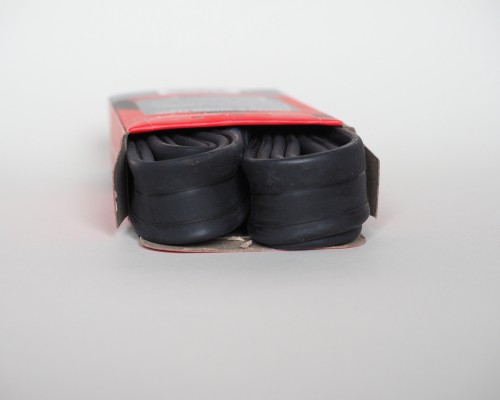Can You Put Inner Tubes in Tubeless Tires MTB
Can you put inner tubes in tubeless tires on your mountain bike? It’s a common doubt that many bikers have.
Inner tubes inside tubeless mountain bike (MTB) tires are a solution employed by riders to address specific challenges or preferences. While tubeless setups offer advantages like reduced puncture risk and lower tire pressures for improved traction, some cyclists opt for inner tubes within tubeless tires for added convenience, ease of maintenance, or compatibility with certain rim and tire combinations.
In this article, we will explore the reasons behind using inner tubes in tubeless MTB tires and discuss the considerations involved in making this choice.
Why Use Inner Tubes in Tubeless Tire?
Tubeless tires are primarily designed to function without inner tubes. This redesign reduces rolling resistance and weight, reducing the risk of getting a flat tire. Because of their increased performance and reliability, tubeless tires are becoming increasingly popular among cyclists.
In particular situations, however, inner tubes may be necessary and won’t completely disappear from the market. Here are the main reasons:
1. Emergency Scenarios: If a substantial tear in a tubeless tire cannot be repaired or the sealant fails to address a significant puncture, inserting an inner tube can be a temporary solution to reach your destination.
2. Compatibility Considerations: Inner tubes can be employed with tubeless clincher wheels, allowing flexibility in tire choice. Conversely, if needed, a tubeless tire can also function with an inner tube installed.
3. Convenience Backup: Some cyclists carry an inner tube as a precautionary backup in case of a tubeless tire experiencing a flat.
Acknowledging that utilizing an inner tube within a tubeless tire may compromise rolling efficiency and puncture resistance is vital. Additionally, certain hook less wheel manufacturers discourage inner tubes due to bead absence.

Do we need a Rim Tape while using a Tube with a Tubeless Tire?
Rim tape and strips play a crucial role by shielding the inner tube from potential puncture-causing sharp edges and poke holes in the wheel rim. Even when using a tube with a tubeless tire, it’s advisable to use tubeless rim tape.
When correctly applied, this tape ensures an airtight seal, safeguarding against water and dirt intrusion through spoke holes.
When the tire operates at high air pressure, applying two layers of tubeless rim tape is advisable to prevent the inner tube from slipping into the spoke holes.
Difference Between Tubeless Tires and Standard Tires
Tubeless and standard tires differ in several important ways:
1. Sidewalls: Tubeless tires have thicker sidewalls for better sealing and to prevent burping during installation. Standard tires have thinner sidewalls because they rely on inner tubes for air pressure.
2. Tire Bead: Tubeless tires have tighter, stronger bead connections with the rim, while standard tires have rounded beads designed for tubes.
3. Air Retention: Tubeless tires seal the tread better, reducing air loss. Standard tires rely on inner tubes for pressure.
4. Riding Pressure: Tubeless tires can be used at lower pressures for improved grip and comfort. Read our guide on maintaining mountain bike pressure.
5. Puncture Resistance: Tubeless tires are less prone to punctures and maintain air longer.
6. Rolling Resistance: Tubeless tires might have lower rolling resistance for potentially better performance.
7. Cost: Standard tires are generally more affordable than tubeless tires.
These differences make each type suitable for different needs and preferences, with tubeless tires excelling in puncture resistance and performance but costing more, while standard tires are budget-friendly but may not perform as well in certain situations.
How to Decide Whether to Put Tubes in Your Tubeless Tire?
When choosing between tubes in your tubeless tire or sticking with a pure tubeless setup, several important factors should influence your decision. The suitability of each option depends on various aspects of your riding style, your bike, and the terrain you plan to tackle
Consider factors like tire damage and compatibility to determine whether to put tubes in your tubeless tire. Using a tube can provide a temporary solution if your tubeless tire is damaged beyond repair. Check if your rims and tires are compatible with tubes; some may need to be fixed. Depending on your riding conditions, tubes might be beneficial for off-road adventures where the tire’s bead seal may be damaged.
In contrast, sticking to tubeless is often preferred for road cycling for its lower rolling resistance. Ultimately, the choice depends on your specific circumstances, but prioritize safety and compatibility.
Final Thoughts
In conclusion, while tubeless tires offer significant advantages in terms of performance and puncture resistance, there are situations where using inner tubes for mountain bikes is still necessary. Factors like emergency scenarios, compatibility, and personal riding style should guide your decision.
Always prioritize safety and compatibility when choosing between tubeless and tubes for mountain biking adventures.





![Are Presta Valve Cores Universal? [Only Facts]](https://www.peoplesbicycle.com/wp-content/uploads/2023/10/Are-Presta-Valve-Cores-Universal.png)

